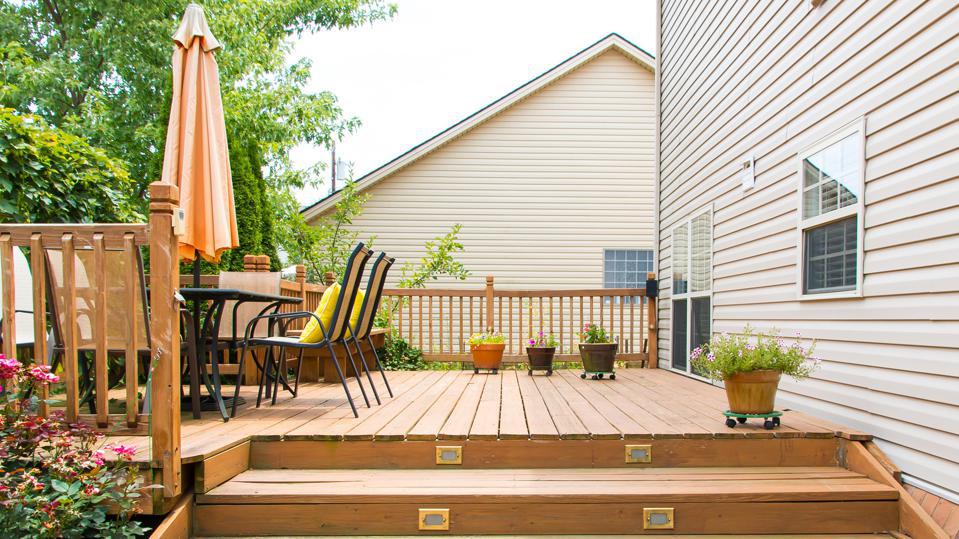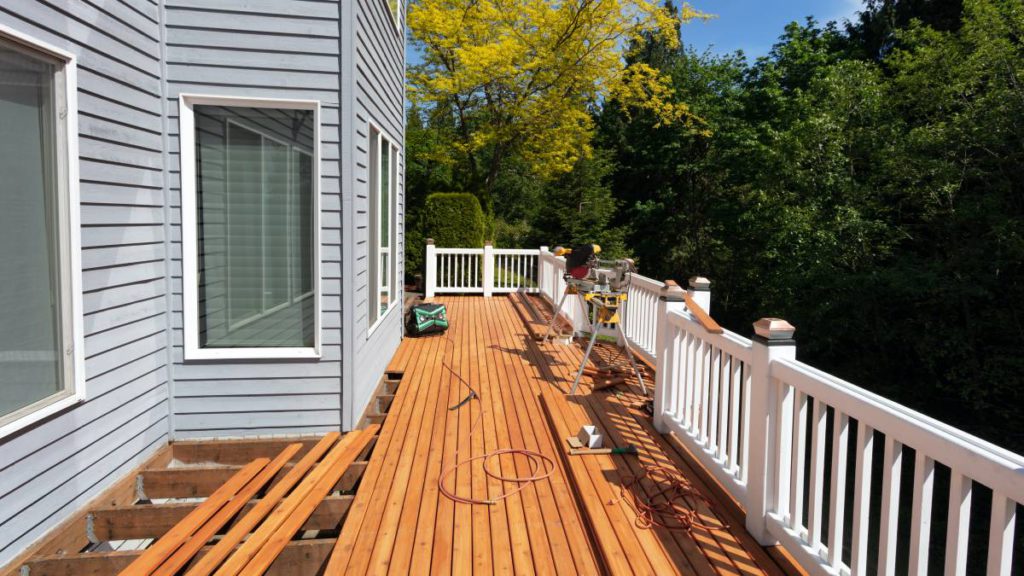
A choice of a better finish gives wood floors protection from humidity, dirt, and wear, and from heavy foot traffic. Factors like changes in temperature and humidity may make wood expand or contract-a floor finish does not prevent wood from moving, but it may decrease the degree of response it has to changing weather.
With this in mind, and anyone who has seen what kids and/or dogs can do to hardwood floors would agree, untreated hardwood might not be the best choice for ultra-active homes (though this depends largely on the wood and the finish). To help prevent damage, you will want to strongly consider avoiding carpeting and furniture in wood floors, as well as keeping pets off of them until your finish is completely set or has been allowed to cure.
For the most severely damaged floors, you will want to sand down all of your old finish all the way down to bare wood. Sand floors down to bare wood if the polyurethane has a wax finish over it, the finish has worn away, or if stains or damage has been done to the floor. If you decide that you would like to replace your wax finish with a polyurethane, you will have to completely strip wax off of your floors.
Some floors come with wax as their sole finish, or the wax is applied on top of either polyurethane or penetrating sealant. Wax finishes are susceptible to staining, and need regular reapplications in order to really make a difference on a floor.
You must also keep in mind that water and chemicals will stain or damage an oil-sealed floor, so you will have to use a timber floor cleaner that is designed for that particular finish. You will want to use the same finish products your flooring was initially coated with.
Whether you are installing your brand-new floor, or you are refinishing the floor you already had, you need to pick the right finish. A wood floor professional can help you decide on which finish is the best fit. Applying the correct finish to wood floors preserves its beauty while protecting wood from spills, scratches, and dulling effects caused by overall wear.

A finish is a liquid substance applied to wood, which forms a durable covering that protects your hardwood flooring from scratches, scratches, spills, and water damage. When used as a flooring finish, polyurethane is applied as a liquid which cures and solidifies to form a moisture-resistant, protective finish layer over the hardwood floor. Those who have children and pets might consider this finish to be a good option, since it is stain-resistant, too.
The lack of harsh chemicals in water-based polyurethane flooring finishes makes them lower in smell when applied, and they offer a more natural appearance. For years, oil-based polyurethane was standard for timber floor polish, but water-based polyurethane is replacing it as one of the more popular types of finishes for a few reasons.
A hardwood floor made with an oil-based finish is typically more stain-resistant and scratch-resistant than one made with a water-based polyurethane finish. Unlike an oil-based polyurethane finish, a water-based finish on hardwood floors is relatively fast drying and does not turn yellow with time. In contrast, water-based polyurethanes dry to a clear finish, which does not change or dull the natural colour or stains color of your hardwood floors.
Unlike most other hardwood flooring finishes, penetrating oils do not leave a hard shell over wood; because of this, a finishing layer of wax is usually applied over oils to provide additional protection. Film-forming finishes, such as petroleum-based polymers or water-based polyurethanes, protect wood by creating a coat that bonds like a coat on top, dries rapidly, and is highly durable. You can sand to the bare wood using 100-grit sandpaper, then apply polyurethane over it in patches matched to the finish shine of your existing finish (use oil-based polyurethane to repair your existing oil-based finish, and water-based polyurethane to repair your existing water-based finish). With the oil-based finish, use a porcelain-bristle brush for edges and corners, and a lambswool applicator for the exposed floors. For edges and corners, apply water-based finishes using a paint roller; on open floors, use a synthetic-wool applicator. For surface scratches and ordinary wear, lightly sand the finish (called screening) and apply a fresh coat of topcoat.
You will know that your floor has a polyurethane finish if it looks like it is covered in plastic wrap, and you cannot scrape off any gooey residue. Oil-based polyurethane has a really strong smell and releases high levels of VOCs, so you will want to wear a respirator to protect your lungs if you are planning on finishing the floor on your own. A matt finished hardwood floor has very little shine, and it will look a little dull, but allows you to see the character of the wood clearly. Most hardwood floors are made from oak, but, despite the sturdy nature of the wood, it looks as good as its surface finish.
Solid hardwood floors can be sanded down and refinished, no matter how long they are installed; doing so can regain that original finish after being scraped or scuffed. When a Certified Professional Wood Floor Contractor applies the maintenance coat on film-form finishes, they will strip away the polyurethane topcoat and apply a new coat of polyurethane all over the hardwood floor all at once.
